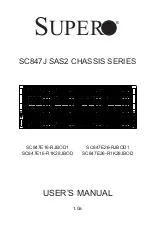
PXE6410 User Manual
Rev. 1.0
Confidential | 14
3.4
Operating Environment
The device is intended for indoor use and should be operated in a clean, dry environment with an ambient
temperature within the range of 0°C to 40°C.
Warning
The PXE6410 chassis must not be operated in explosive, dusty, or wet atmospheres. Avoid
installation of the module close to strong magnetic fields.
The design of the device has been verified to conform to EN 61010-1 safety standard per the following
limits: Installation (Overvoltage) Category I (Measuring terminals) Pollution Degree 2 Installation
(Overvoltage) Category I refers to signal level, which is applicable for equipment measuring terminals that
are connected to source circuits in which measures are taken to limit transient voltages to an
appropriately low level. Pollution Degree 2 refers to an operating environment where normally only dry
non-conductive pollution occurs. Occasionally a temporary conductivity caused by condensation must be
expected.
3.5
Power Requirements
The chassis may be operated from a wide range of mains voltage from 100 to 264 VAC. Voltage selection
is automatic and does not require switch setting. The chassis operates over the power mains frequency
range of 47 to 63Hz. Always verify that the operating power mains voltage is the same as that specified
on the rear panel. The instruments power consumption is 550 W max.
The device should be operated from a power source with neutral or near ground (earth potential). The
instrument is not intended for operation from two phases of a multi-phase ac system or across the legs
of a single-phase, three-wire AC power system. Crest factor (ratio of peak voltage to RMS) should be
typically within the range of 1.3 to 1.6 at 10% of the nominal RMS mains voltage.
3.6
Grounding Requirements
To ensure the safety of operating personnel, the U.S. O.S.H.A. (Occupational Safety and Health)
requirement and good engineering practice mandate that the instrument panel and enclosure be “earth”
grounded.
3.7
Performance Checks
The chassis has been inspected for mechanical and electrical performance before shipment from the
factory. It is free of physical defects and in perfect electrical order. Check the instrument for possible
damage in transit and perform the electrical procedures outlined in the section entitled Unpacking and
Initial Inspection.
3.8
Long Term Storage or Repackaging for Shipment
If the instrument is to be stored for a long period of time or shipped immediately, proceed as directed
below. If you have any questions, contact your local Tabor Electronics representative or the Tabor

























